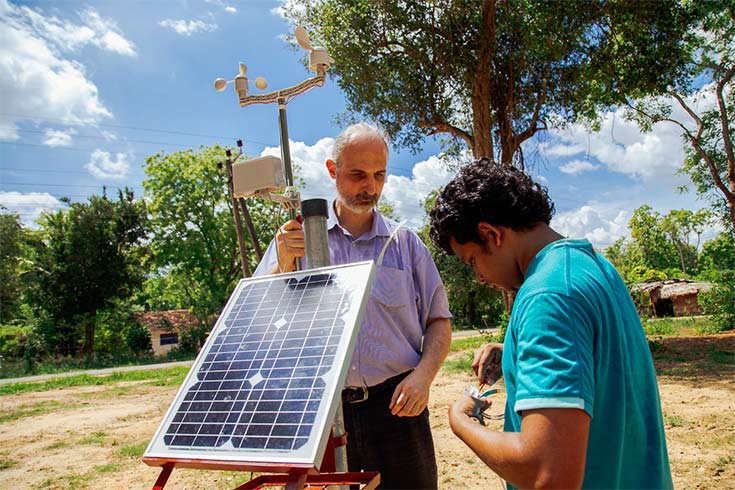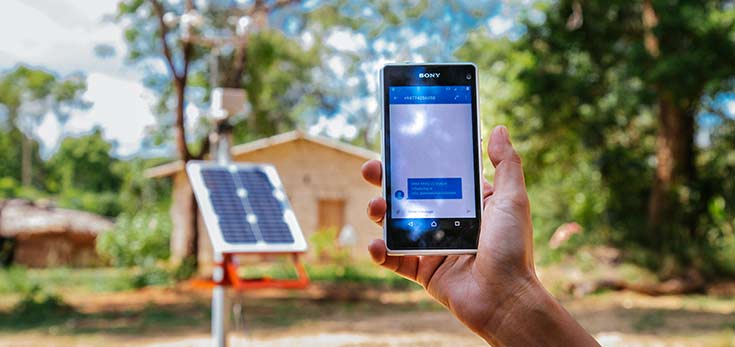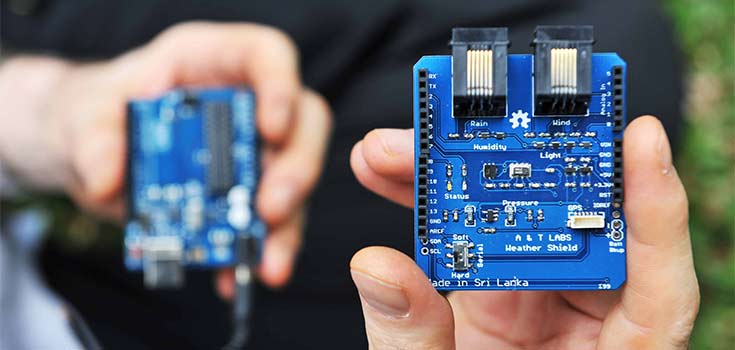Low cost weather centres to help prevent flash flooding in Sri Lanka
Soumya Balasubramanya and Yann Chemin describe how open-source mobile weather monitoring centres are being installed to reduce the risk of flash floods in Sri Lanka.
The International Water Management Institute (IWMI) is piloting open-source mobile weather stations with the Irrigation Department in the Nachchaduwa catchment in Sri Lanka. Funding comes from the Global Facility for Disaster Reduction and Recovery (GFDRR) through the Challenge Fund.
The Nachchaduwa reservoir is an important source of water for irrigation in the district of Anuradhapura. Reservoir managers try to maintain full supply level, to accommodate demands for irrigation water. In the monsoon season, the managers try to balance maintaining full supply level with creating enough storage volume to accommodate runoff from the upper catchment. This decision-making is complicated by the paucity of rainfall data, which is reported by the meteorological department once a day, as a daily average.
During the monsoon, such sparse reporting is not sufficient to make timely decisions regarding what volume of water should be released prior to the runoff entering the reservoir. Consequently, the reservoir spills, and floods the agricultural and residential land in the lower catchment.

Creator Yann Chemin of the IWMI with a mobile weather station in Sri Lanka (Alexis Yiou/IWMI)
With access to timely data on rainfall intensity, reservoir managers say that they would have more time to prepare the reservoir to accommodate runoff from the upstream catchment during the northeast monsoon. “Flash floods are becoming more common in the catchment during the monsoon, and having access to data on hourly rainfall intensity in this season is required for managing the reservoir and reducing damages from flooding,” said Mr. Lasindu Kovilaarachchi, Divisional Irrigation Engineer of Nachchaduwa, in a meeting with the project team on April 20, 2016.
Responding to a request from the Irrigation Department, five open-source mobile weather stations have been installed in the upper catchment of the Nachchaduwa reservoir, and have been programmed to send SMS text alerts when rainfall intensity exceeds 10mm/hr. Reservoir managers estimate that it takes around eight hours for rainfall in the upper catchment to enter the reservoir; with hourly data, response time for managing the reservoir is improved, helping to reduce damages from flooding.
Yann Chemin (IWMI) created these weather stations using open source hardware and software. Each station consists of an Arduino microcontroller, a weather shield, a GSM board, weather sensors, and a micro-SD card. Access to the manuals for assembling, maintaining and programming the stations can be found here.

Each station consists of an Arduino microcontroller, a weather shield, a GSM board, weather sensors and a micro-SD card. The inner circuitry can be seen below (Alexis Yiou/Neil Palmer/IWMI)

Using local parts and labour, the stations cost less than $500 per installed unit. A cost-effectiveness study conducted by Soumya Balasubramanya and Richard Hardy (IWMI) demonstrates that even if extreme rainfall occurred once every five years, and if small reductions in area and duration of inundation are achieved through better reservoir management, post-disaster rehabilitation expenditure would be substantially reduced for the government; the cost of installing these five units would be recovered in two-and-a-half years.
Mobile weather stations are being used in Sri Lanka by a number of government departments, universities, and non-governmental organisations. To connect a community of professionals, Farah Ahmed and Mohamed Aheeyar of IWMI organised a workshop in Colombo this May, to discuss the experiences of using open source weather stations, and to understand the opportunities for and constraints in the use of such technology in Sri Lanka.
In addition, IWMI and the GFDRR organised a side event at the Understanding Risk 2016 conference on May 16, titled ‘Build a mobile weather station in one day with open source hardware and software’. This session demonstrated assembly and activation of weather stations.
Soumya Balasubramanya, Yann Chemin, 03/06/2016